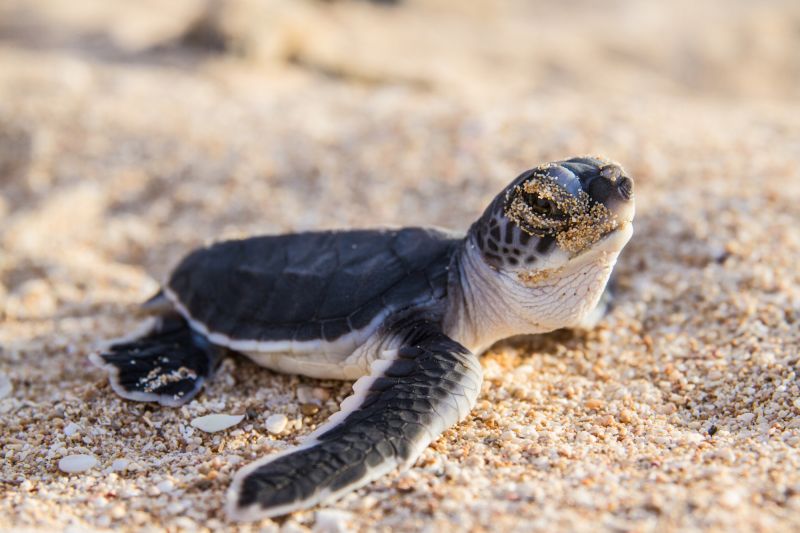The Green Turtle is one of the world’s largest sea turtles. At an average length of 1.2 m (4 ft) and weight of 225 kg (500 lbs), they are second in size to the Leatherback Turtle.
These turtles are herbivores, feeding on sea grasses, algae and other marine plant matter. They have a sharp, serrated beak which allows them to graze efficiently on seagrass beds as well as scarping algae from rocks. In fact, their gentle feeding method is believed to improve plant growth as they carefully eat only the top of the leaves without disturbing the roots. This promotes healthy and fast-growing seagrass!
Although it is commonly believed that this species was named after the colour of its shell, it was actually named after the colour of its fat and cartilage. As a result of hunting, pollution and other human-related factors, the worldwide population is classified as endangered. Many organisations, such as Sea Turtle Conservancy, See Turtles and Sea Turtle Foundation are providing much-needed support for the Green Turtle and other endangered sea turtles.

Image: Green Turtle swimming along the Ningaloo Reef.
Did you know?
Key West in Florida was once the site of a turtle fishery, until the 1970s when the species became protected.
Green Turtles migrate long distances between feeding grounds and the beaches in which they nest. They are found in tropical and sub-tropical waters around the world. In Australia, the Ningaloo Reef provides a reliable and relatively safe nesting ground. During peak nesting season, hundreds of turtles can be found nesting on the beaches.
In Australia’s late summer, from January through to March, hatchlings will begin to make their way from their sandy nests to the water’s edge. If they are lucky enough to make it past the immediate threat from above (birds), they then must spend the coming days and weeks fending for themselves in the open ocean, avoiding predation from sharks and larger fish.

Image: Green Turtle hatchling making its way to the ocean.
Where can I see the Green Turtle with an expert guide?
Exmouth Dive and Whalesharks Ningaloo offer a range of cruises on the Ningaloo Reef. Guests often encounter the Green Turtle swimming along peacefully, among the two other turtle species (the Loggerhead and Hawksbill Turtles).
Please note: Tours may be subject to seasonality.
FAQs
Q: How fast can Green Turtles travel in the water?
A: Thanks to their streamlined shell and flippers, they can reach speeds in excess of 50 km/hr (35 m/hr).
Q: I didn’t know they were herbivores - is that the case with other sea turtles?
A: They are actually the only herbivorous sea turtle - other turtles will feed on shellfish and invertebrates such as clams and mussels.
Q: How long can a Green Turtle hold its breath?
A: It is believed that Green Turtles and a number of other sea turtle species can hold their breaths for a number of hours. As they are cold-blooded, they are able to hold their breath for longer in colder water.

